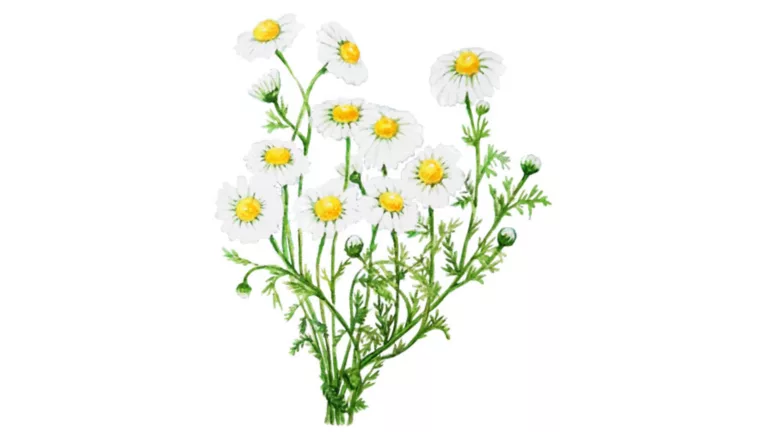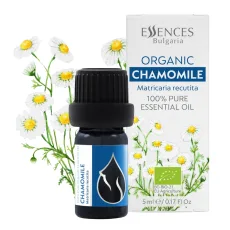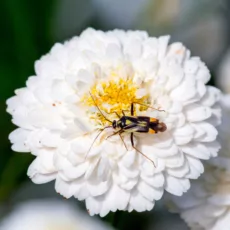Chamomile

German chamomile (Matricaria chamomilla) is an annual herbaceous plant belonging to the aster family (Asteraceae). Its fragrant, daisy-like flowers form solitary heads composed of white ray florets with a yellow center.
In nature there are several plants we call—or liken to—“chamomile.” The most widespread, however, is German chamomile (Matricaria chamomilla), which has the strongest medicinal properties. The herb’s generic name, Matricaria, means “mother’s herb,” reflecting its successful use in treating women’s ailments. Chamomile’s aroma and taste are often compared to a crisp apple—which is no surprise, since its name derives from two Ancient Greek roots: chamai (“low, on the ground”) and mellon (“apple”)—hence “ground apple.”
German chamomile was used centuries ago by the ancient civilizations of Egypt, Rome, and Greece. Hippocrates and Dioscorides used chamomile to ease seizures and relieve pain. Avicenna believed the plant to be an excellent astringent. Pliny used chamomile as an antidote for snakebites.
The Egyptians venerated chamomile and dedicated it to the sun; the herb was among the ingredients used in the embalming of pharaohs. Because of its fever-reducing properties, ancient Egyptian healers called it the “flower of the Sun God.” All Egyptians, without exception, were said to drink chamomile tea on the third day of each month, thereby cleansing and disinfecting the stomachs of those living along the valleys of the White and Blue Nile—bringing a sense of deep relief and joy.
In folk medicine, German chamomile is used to relieve stomach pain and colic; for urticaria (via compresses); as a gargle for inflammatory diseases of the oral cavity (stomatitis, gingivitis); for bad breath; and for fungal inflammations of the oral mucosa. Compresses made from an infusion are used for external hemorrhoids and fistulas, and as vaginal douches for leukorrhea, etc. Rinses or compresses with chamomile are often used to treat watering, inflamed eyes, conjunctivitis, and rashes on the eyelids.








